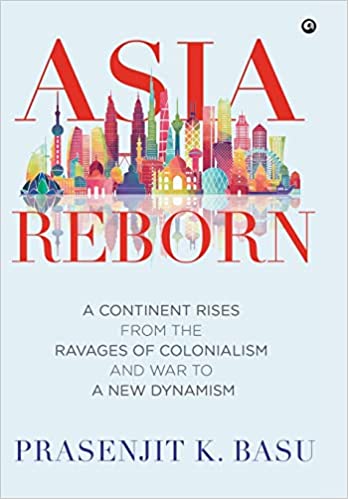Asia Reborn
no information available
Asia Reborn unveils the story of Asia’s resurgence over the past century, cutting through the fog of Western narratives that have long obscured our view. In the first single chronicle of the modern economic and political history of the whole continent, Prasenjit K. Basu weaves together a compelling account of how Asia’s nations overcame European domination in the twentieth century—and its legacies of war and famine—to begin the long climb to economic dynamism. From the story of Burma’s guillotined birth to the stunted path of nationalism in the Philippines to the less-than-non-violent tales of India’s struggle for independence to Arabia’s complex politics of oil to the emergence of Japan as an economic power to Britain’s destructive divisiveness in resisting the end of colonialism, this is a lucid and in-depth history of Asia’s modern era. The book gives particular credence to the catalytic role Japan played as leader of Asia’s rebirth. As the author recounts, the most prosperous parts of Asia in the second half of the twentieth century were those that had been ruled by Japan, while those parts of Asia that were ruled longest by the British were its poorest. In Taiwan, Korea and Manchuria, the Japanese built physical infrastructure, modernized land tenure, invested in heavy industries and vastly boosted literacy. That legacy proved vital in launching them onto the path of modern economic growth in ways that no European colony was ever equipped to do; instead they were debilitated by the social conflicts sparked by European overlords. Asia Reborn shows British, Dutch and French colonies to have had scant infrastructure or modern industry, and to have consequently been far behind Taiwan, Manchuria and Korea in social indicators such as literacy and life expectancy by mid-century. In West Asia and Burma, the brief European imprint (especially the hand of Churchill) created the ethnic conflicts that still plague these regions. The British Indian Army held the edifice of empire together. Ultimately, it was the undermining of its legitimacy by the armies of Subhas Bose, Sukarno, Ho Chi Minh and Aung San that helped end the ravaging of Asia during the first half of the twentieth century. By the end of the century, the eastern part of the liberated continent, from South Korea to China and India, had emulated Japan and Singapore in transforming itself into an industrious, dynamic and increasingly creative force finally capable of taking its people to new heights in an Asian twenty-first century. ... Read more Read less











